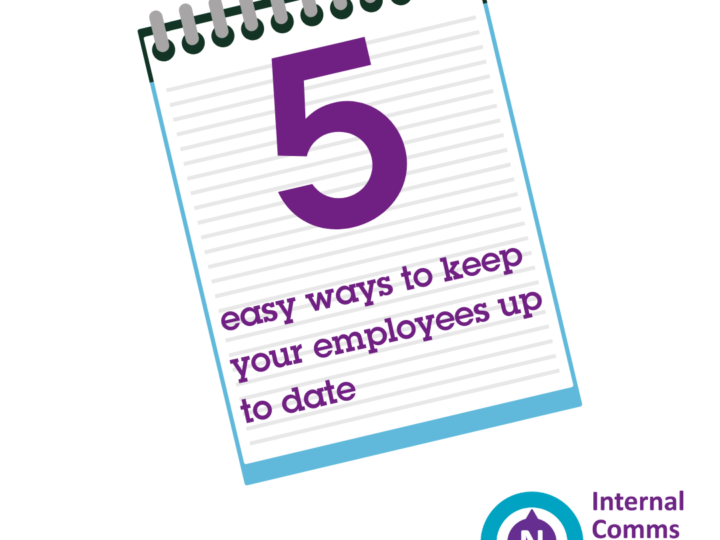So, your business is doing great things; maybe you smashed your yearly targets, won a new client after an intensive pitch process, secured a quirky new project, recruited a new employee or perhaps you’ve introduced a new product or service and you want to tell your customers all about it.
Aren’t you forgetting something? Press release is ready to go, social posts are drafted and optimised with those oh-so-important hashtags… but have you even told everyone in your team? Your employees don’t want to read about it from an external media source, bring them in on the action and let them be the first to know!
Internal communications is more than just updates about office etiquette and giving people bad news when an issue or crisis happens; your team wants to know what’s happening in the organisation because they care about where they work (or at least they should!) and they want to feel part of the bigger picture to give them purpose and drive. In fact, without good internal communication, even the most interesting stories that your customers and stakeholders want to hear may never reach the central marketing team. It works both ways, the more you get people talking, the more everyone will have to say.
From working with high growth SMEs across the North of England, we know how difficult it can be to formalise internal comms when the current system is as basic as post-it notes and unreliable word of mouth. So, we’ve pulled together some simple ‘hacks’ to get you started on the basics:
- Don’t assume all your employees will see what you’re putting out externally: Something as simple as adding your corporate Twitter feed to the homepage of your intranet or sharing the most popular posts on your LinkedIn company page that month will not only keep people updated on what you’re putting out but also spark ideas for external-facing content they could contribute to.
- Engaging internal comms doesn’t need to include flashy campaigns or specialist digital platforms: A simple monthly e-newsletter that puts everything in one place from Directors’ financial updates to project spotlights and team news, gives your workforce an easy-to-digest way of keeping on top of things without being bombarded with lots of different emails and updates.
- Communication is a two-way street: Make it everyone’s responsibility to feed information into the central marketing comms team about what their team is up to. You don’t want to impose a new system which adds another job to their to-do list; the more engaging the comms is the better so by encouraging different teams to get involved in shaping the content you’ll be creating a ‘workforce of storytellers’.
- Don’t pretend to be something you’re not: Authenticity is key and your employees will be quick to spot if your comms isn’t in line with your true company ethos. Establishing what the company’s culture really is from the people within it will help to develop an authentic tone of voice.
- Make sure it’s measurable: Before the first piece of comms is sent out you need to define what your objectives are and be prepared to regularly evaluate it: What’s the long term goal and how are you going to reach it? Internal surveys can give a good indication of what your team thinks is missing, but make sure you’re prepared to listen and analyse your findings!
Read more tips on internal communications for SMEs from our Director Helen in the Yorkshire Post.
Are you responsible for internal communications in your organisation? Join the Internal Comms Network North to share best practice with your peers and be the first to hear about our upcoming events.



